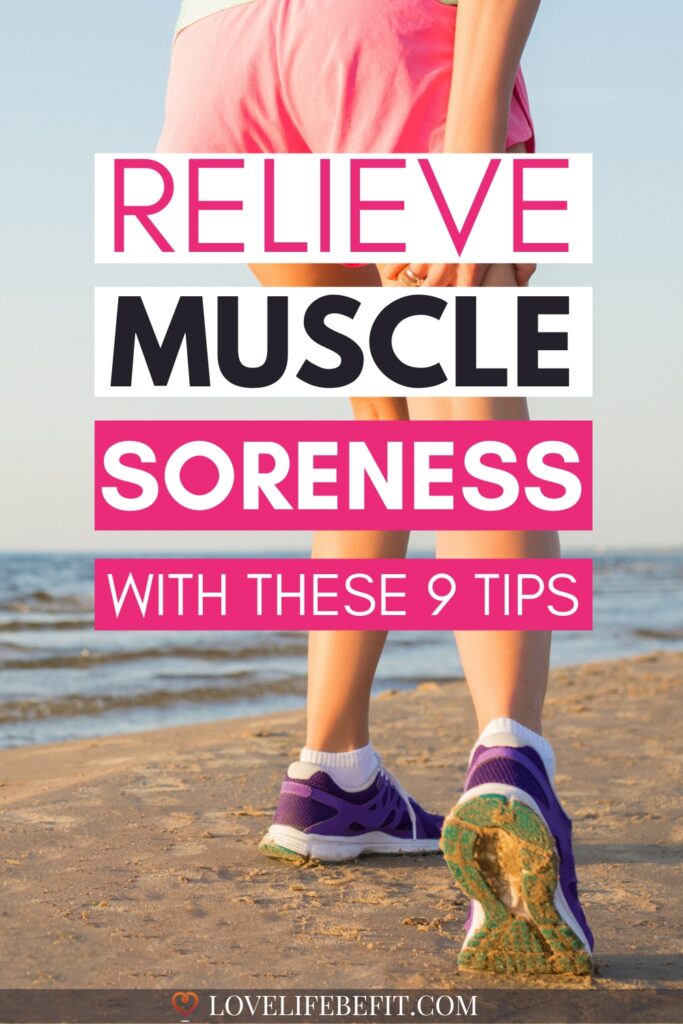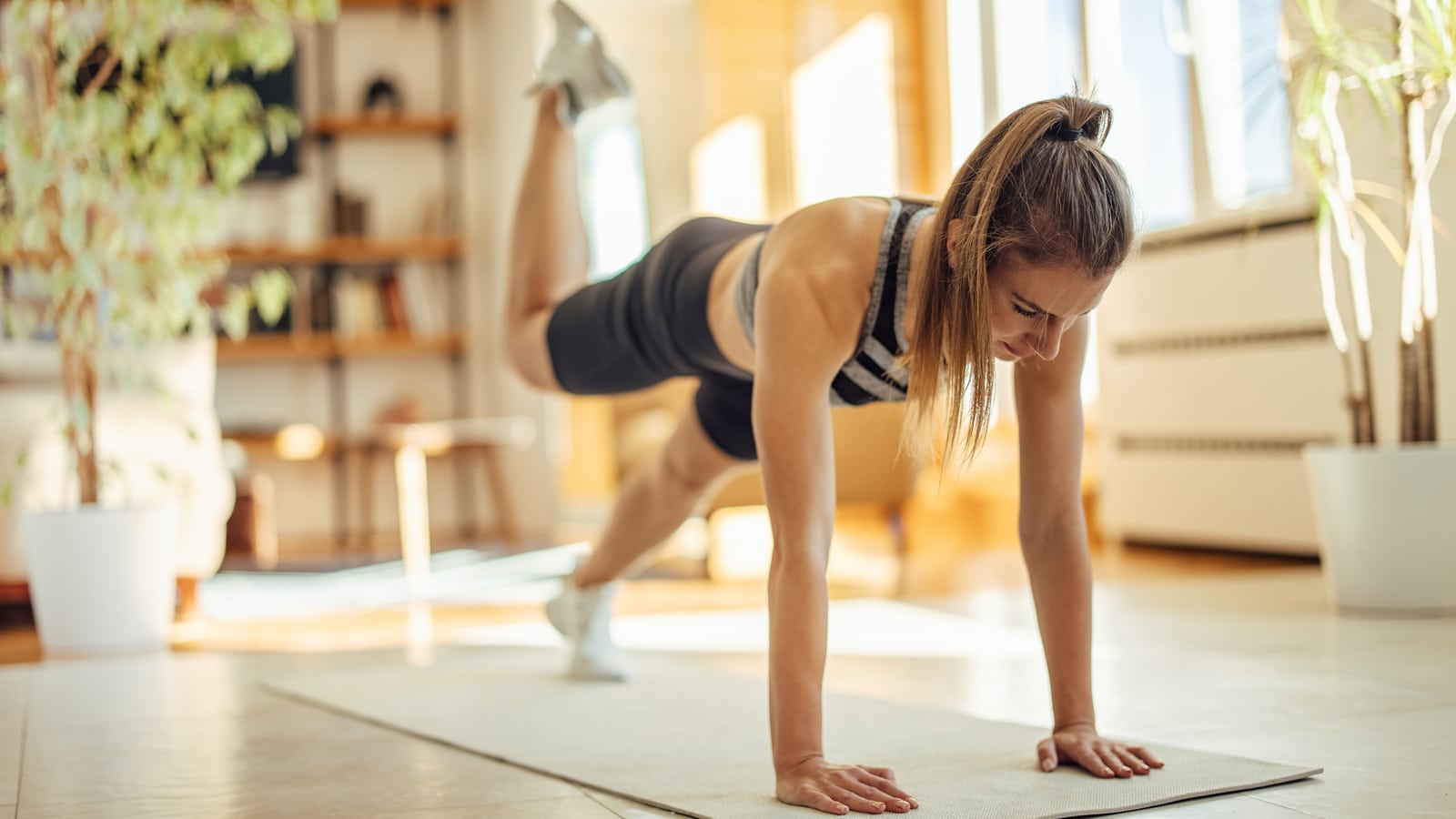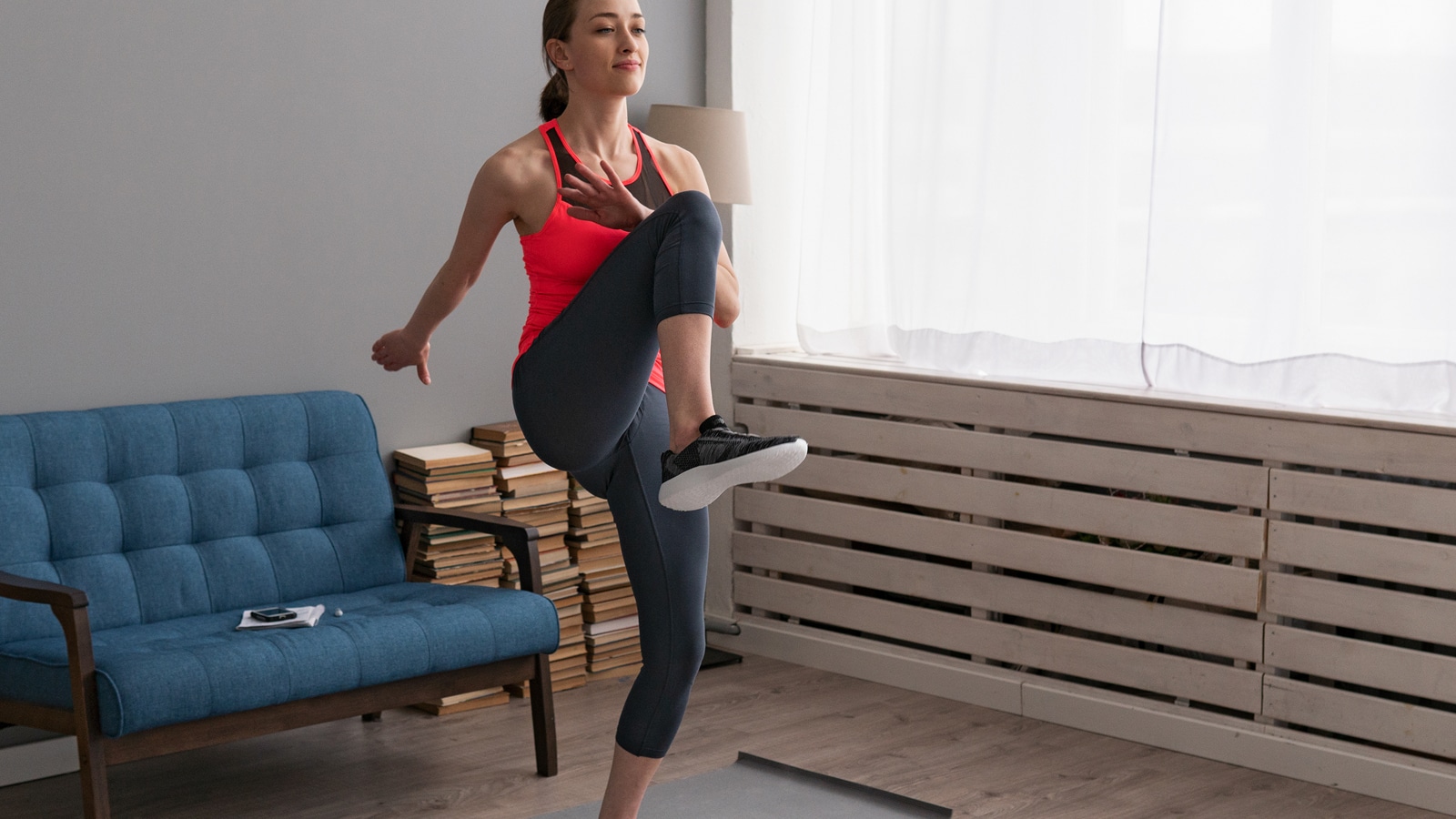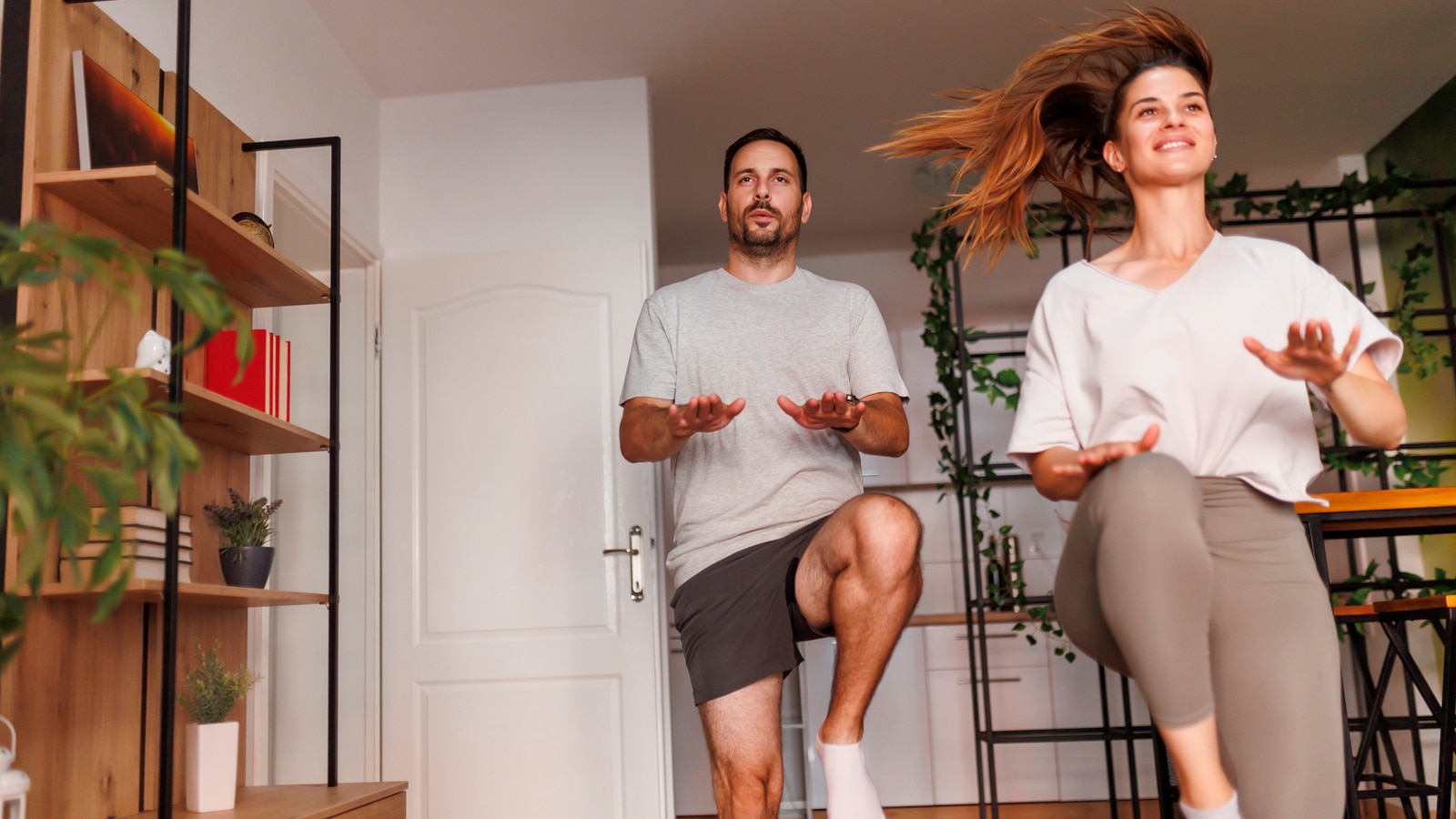9 Tips for Sore Muscle Relief After Your Workout
Did you overdo leg day in the gym? Or maybe you pushed too hard on your last run or walk? Either way waking up the next day with sore muscles is one of the hazards of exercising. Most of the time, you only need a little rest and some sore muscle relief. With these post-workout tips, you’ll find out how to stop being sore after a workout.
There are two types of muscle soreness:
- Acute muscle soreness felt during or immediately after exercise. Think of it as your body saying it’s hit its limit and it’s time to stop. Normally this pain eases quickly.
- DOMS: delayed onset muscle soreness. I’ve seen grown men cry from DOMS (of course women are made of tougher stuff!). It’s an inflammatory response from the microscopic tears that occur when you exercise. I know that sounds bad, but this microscopic damage stimulates the body to lay down more muscle fibers and get stronger. Maybe that’s where the phrase “no pain no gain” comes from!
This post contains affiliate links. This means I receive a commission if you make a purchase through my links, but this is at no additional cost to you. Please read my disclaimer for more information.

Coping With Sore Muscles
DOMS catches you out. You can finish a workout and feel terrific. It’s often when you feel terrific that delayed onset muscle soreness strikes. When you’re feeling good about a hard session. But you wake up the next morning and can’t raise your arms above your head or walk down the stairs without screaming! DOMS peaks 24 to 72 hours after exercise and normally strikes when you’ve increased your activity level.
Maybe you’ve just started walking for weight loss and you set a fast pace on your first walk. Or it was your first gym session in a while and you were a little too ambitious with the weight selection. For me, it’s normally after a good race. If I get a new PB for a 5K my body will make me pay for it the following day.
9 Tips For Sore Muscle Relief
The good news is DOMS will be less frequent as your body adapts to exercise and there are many ways you can avoid or ease aching muscles.
1. Warm Up Properly
This may not be what you want to hear after you’ve pushed hard through a workout without warming up properly first. But at least you’re pre-warned for next time.
An adequate warm-up gets your muscles ready to work hard. There’s less risk of injury and you’ll reduce muscle soreness after your activity.
Start your exercise session with 10-15 minutes of cardio at an easy pace, either walking or jogging, and include some dynamic stretches such as walking lunges, leg swings, and arm circles. Focus on warming up the muscles you’re going to use in your workout.
Stay away from static stretching where you stretch muscles and hold a position for as long as possible. This type of stretching before a workout can decrease your performance. Save it for later.
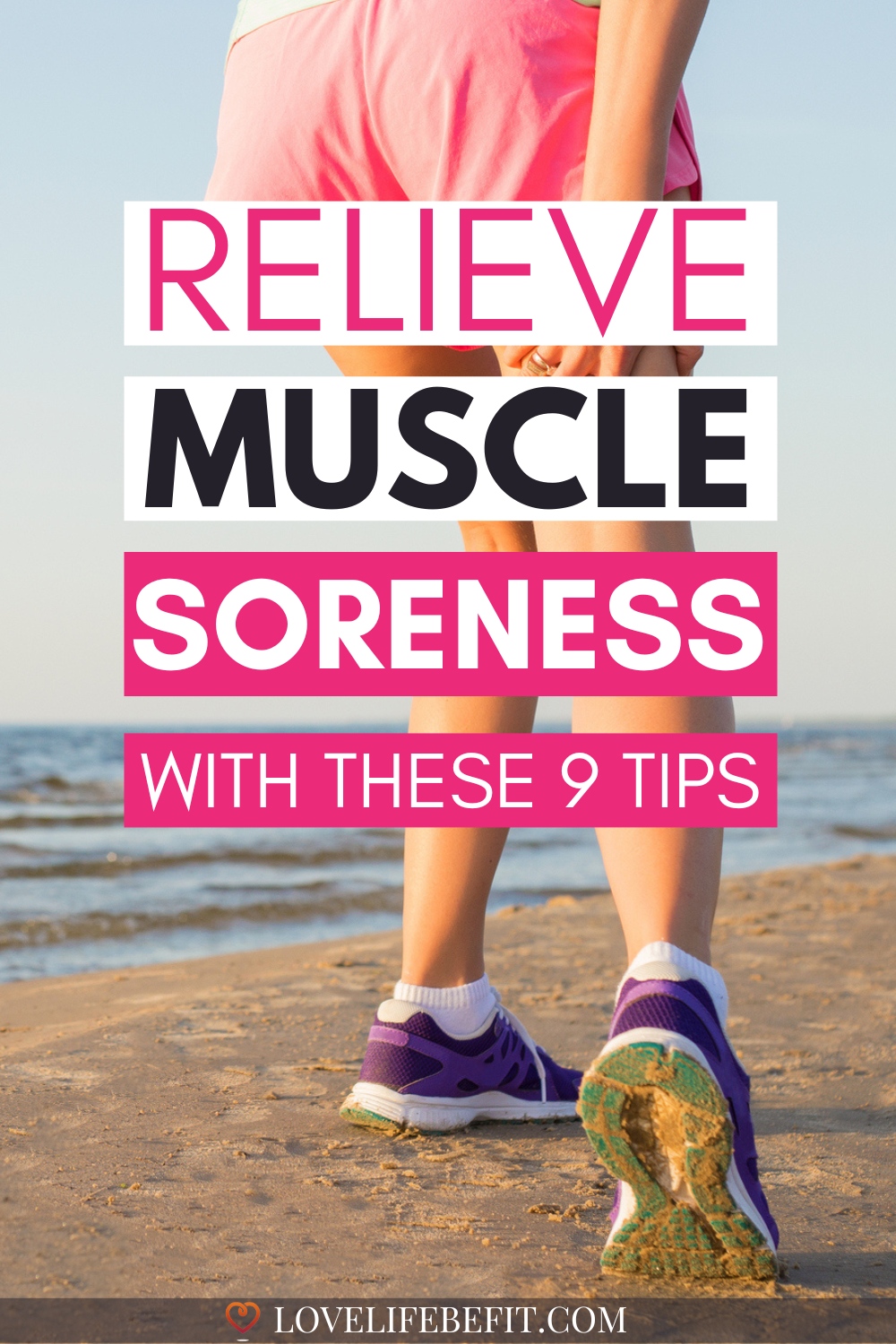
2. Take A Hot Bath
Any form of heat therapy immediately after exercise will reduce delayed onset muscle soreness but taking a bath is one of the best ways to ease those sore muscles. Add Epsom salts to your bath water and take a long soak. The Epsom salts will help ease your muscle pain and reduce inflammation.
3. Use A Foam Roller
Some people swear by foam rollers to ease those sore muscles. I’m not a fan. For me, foam rollers are just an added torture, squashing muscles that just need a bit of rest. But I think this is something you have to try out for yourself.
Just note that if you find you’re using a foam roller regularly, ask yourself why. Do you have muscle imbalances or poor form in your workouts? Try and get to the root cause of the problem instead of reaching for a quick fix.
4. Treat Yourself To A Massage
A gentle massage is an effective way of relieving the discomfort of DOMS. For best results, get one within 48 hours of your workout. Using a massage gun can be a good alternative.
5. Try Some Light Exercise
I’m guessing it’s the last thing you feel like doing when your muscles are sore! But a walk or jog will get blood flowing to the sore muscles and speed up the recovery process. Give it a try but remember to keep your session light and easy.
6. Hydrate And Try Some Caffeine
Staying fully hydrated will help your muscles recover so make sure you drink adequate water. You can also try some caffeine – it’s known to help relieve muscle pain.
7. Wear Compression Garments
Marathon runners will sleep in their compression tights after a long hard run. I’m not suggesting you go that far but wearing compression garments will help to relieve pain by holding the sore muscles in place and increasing blood flow to speed up recovery.
8. Avoid NSAIDs
Over-the-counter nonsteroidal anti-inflammatory drugs (NSAIDs) may seem like a quick fix but it’s best to avoid them. That inflammation is helping your muscles recover. Plus, NSAIDs come with a whole heap of unpleasant side effects. Do your body a favor and avoid them.
9. Try Anti-inflammatory Foods Instead
Research is a bit limited but several foods may help with muscle soreness such as watermelon, cherry juice, ginger, and pineapple. You can also try food supplements such as curcumin (a compound from turmeric) or fish oil.
Easing back on your workout routine, gentle exercise and a few of the above tips should see relief from muscle soreness within 2 to 4 days. If the pain persists for more than a week or becomes a sharp pain, seek medical advice from your doctor or another qualified health professional.
